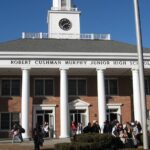Faith & the Faculty
Academics tend to be more religious than non-academics, an economist from MIT says. But, when pressed, MIT economist John Gruber admitted that belief and unbelief may vary by department. “My wife is in the Divinity School [at Harvard] and she says nothing will crush your spirit like Divinity School,” Dr. Gruber conceded.
Certainly, conservative students in the Divinity School regularly feel crushed. Dr. Gruber, in turn, based his assertion on the conclusions of another academic—Rodney Stark of Baylor. Those findings, in turn, do not gibe with some polling data.
For example, The Chronicle of Higher Education recently reported that 11 percent of college and university presidents attend religious services on a weekly basis. Dr. Gruber himself reports that two-fifths of Americans go to church every week.
Two-thirds of Americans belong to a church, Dr. Gruber notes, and two-thirds of charitable giving, in turn goes to religious organizations. The economics professor, who has taught at MIT since 1992, spoke recently at the American Enterprise Institute (AEI), where he described some of his findings from his research on Religion and Economic Life.
“Doubling the frequency of your religious attendance increases your income by 10 percent,” Dr. Gruber says, but cautions that “This is not saying that more religious cities do better than less religious cities.”
Dr. Gruber also found that “Religious observance leads to higher marital rates and lower divorce rates.” Although the very research that Dr. Gruber is engaged in may seem wildly politically incorrect, coming as it does out of the home court of Noam Chomsky, the amiable economist himself has impeccable establishment credentials.
For one thing, he took a leave of absence for a year in the 1990s to serve in President Clinton’s Treasury Department. Consequently, he refers to the tax break that the IRS grants to religious contributions as a “subsidy.”
Nonetheless, he does affirm a conclusion reached by more conservative scholars. On his own, he confirmed Marvin Olasky’s research that FDR’s New Deal government programs crowded out private giving.
“Government relief made up 90 percent of the income of the poor after the New Deal,” Dr. Gruber said at AEI. “Church relief made up 90 percent of the income of the poor before the New Deal.”
“Church/charitable giving dropped in 1933 with the inauguration of the New Deal, not 1929 when the Stock Market crashed.” In fact, “Church spending fell by one-third after the New Deal.”
Dr. Gruber explained how the Roosevelt Administration achieved such preeminence. “With no OMB [Office of Management and Budget], Appropriations Committee chairmen would determine federal agency funding,” Dr. Gruber related. “[White House aide] Harry Hopkins would play a game with them.”
“He got to determine where the money went, so he told Congress, ‘Give me a bigger pie and I will give you a bigger slice.’” Thus did the district of Texas Democrat James P. Buchanan become the site of the nation’s first local Social Security office.
Malcolm A. Kline is the executive director of Accuracy in Academia.




